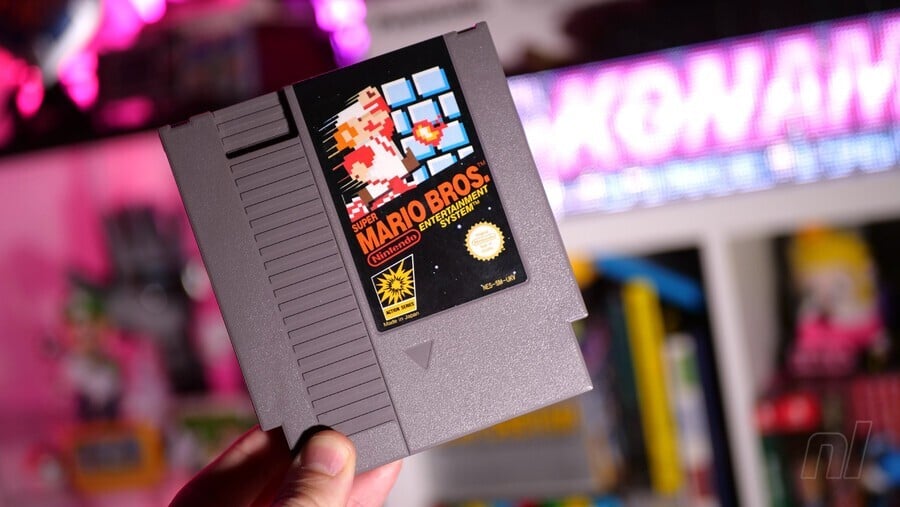Nintendo Life
Curated From www.nintendolife.com Check Them Out For More Content.
Over the holiday season, we’re republishing select articles from Nintendo Life writers and contributors as part of our Best of 2023 series. Enjoy!
Soapbox features enable our individual writers and contributors to voice their opinions on hot topics and random stuff they’ve been chewing over. Today, Gavin reflects on how Charles Martinet helped craft a character that, somehow, isn’t the most irritating stereotype imaginable…
How many times have you tapped a button to make Mario jump? How many wahoos have you heard over the last three decades? If you’re anything like us, it must be in the millions, and since Super Mario 64 most of those leaps have been accompanied by an ebullient whoop from Mr Charles Martinet.
The veteran voice actor got his start as Nintendo’s mascot at tradeshows in the early ’90s and voiced Mario in a couple of pre-64 spin-offs, but it was the N64 launch title which debuted his vocal talents to the majority of gamers. His utterances punctuated many a young player’s awakening to the medium and its untold potential as they bounded around Bob-omb’s Battlefield for the first time. It was a formative moment for millions of people, and Martinet was right there with them.
Over the course of that adventure and the many that followed, he became such a part of the furniture that it’s easy to overlook his contributions throughout the mainline Marios and the dozens of spin-offs. Martinet went on to voice Luigi, Wario, and a host of other relatives and bit-players in the series. His tones are part of the melodious fabric of the Mushroom Kingdom. And he’s crafted his contributions from pretty much nothing.

Before I continue, a confession. Cards on the table — I’ve never been a huge fan of Mario, the character. He’s an inoffensive figurehead and I’ve got nothing against him but, for me, Mario himself never really evolved beyond the limited lump of pixels he started out as. He is a ‘jumpman’, devoid of real personality beyond the dynamic art on the Famicom box, which for the Western versions of Super Mario Bros. was just the pixel art blown up. The games he stars in? Now they inspire passion. The character himself, though? Not so much.
Mario’s popularity as a character is largely accidental. As with the frequently compared Mickey Mouse, he’s a cipher through which Nintendo showcases its peerless platforming; his blandness is a virtue — a necessity, almost — which never threatens to get in the gameplay’s way. With an outfit and features famously born of technical limitations, the Mario we know today coagulated from a pile of pixels and a few pieces of inspired promo art. Hardly an auspicious start for the most famous face in all of video games.
Shigeru Miyamoto may be Mario’s ‘father’, but two other people are primarily responsible for the icon known and loved by millions today: artist Yoichi Kotabe, the man behind that artwork that adorned the boxes of the 2D Marios and set the template for his look; and Charles Martinet, who gave voice and personality to a bunch of pixels.
Martinet’s Mario didn’t come from a place of daring, divine inspiration, either. His gut-feeling take on an Italian plumber from Brooklyn is swimming in stereotype but, again, it’s a shorthand that gets you into the game with the minimum of fuss. Italian dude, moustache, says “Mamma mia” a lot and dreams of pasta — this wasn’t pushing any boundaries, and that wasn’t the point. He’s a dumpy Italian plumber with a royal crush who likes jumping on sentient mushroom monsters. That’s all the context you need. Job done.
Martinet’s real talent was creating a voice which didn’t grate after you’d heard the same tiny clip play 100 times, 1000 times, 10,000 times. There is incredible nuance in his delivery; he walks an extremely fine tightrope between touchstone stereotype and good-natured, kid-friendly, infectious enthusiasm that, crucially, impossibly, never palls.
How did he do that? How did Mario’s whoops and yelps and waahaahahs not drive you up the wall? The talent of the audio directors who implemented his lines shouldn’t be underestimated, of course, and thankfully Martinet has been able to do more than just whooping and hollering over the years. Fundamentally, though, the fact that I’ve never had cause to mute Mario in the hundreds of hours I’ve leapt around in his shoes is perhaps the best endorsement of Martinet’s work anyone could give.

He has been with you every step of the way for nearly three decades, providing the literal soundtrack to your button presses. Much like Mickey Mouse, whose voice passed from Walt Disney himself to younger custodians, Martinet has set the vocal foundation for a character who will outlive us all.
Thanks, Charles.

